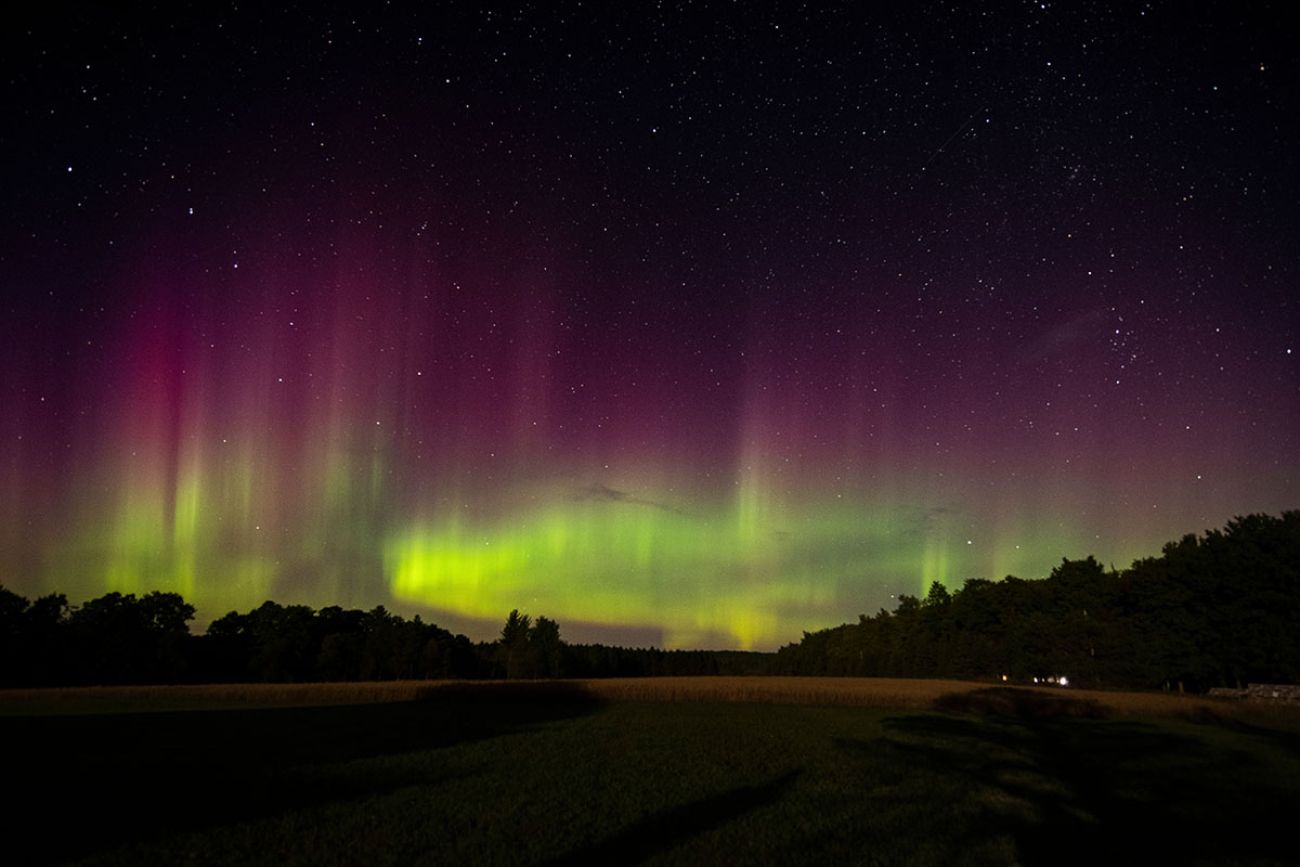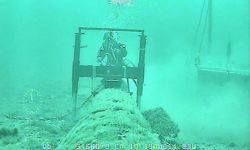Severe solar storm will make northern lights visible in Michigan

- Michigan residents may be able to catch the northern lights Friday night
- The light show, when it appears, is typically limited to northern regions of the state
- A geomagnetic storm caused by coronal mass ejection from the sun can make the show visible in lower parts of the country
May 11: Northern lights put on spellbinding show in Michigan. How to see them again
Earth could be impacted by a major geomagnetic storm starting Friday, making the northern lights visible to most of Michigan, not just the northern region.
The National Oceanic and Atmospheric Administration issued a severe geomagnetic storm watch Thursday, the first time since 2005 that the agency had put out a so-called G4 alert. The storm was expected to hit Earth’s magnetic field Friday and persist into the weekend.
In an update Friday evening, NOAA’s Space Weather Prediction Center said G5, or extreme, conditions had been observed for the first time since 2003.
Geomagnetic storms are major disturbances in the Earth’s magnetosphere caused by energy from solar winds. Severe storms can occur after a coronal mass ejection, when the sun expels tons of plasma and magnetic fields. In its announcement Thursday, NOAA said at least five “earth directed” CMEs had been observed.
That’s in addition to several strong solar flares that are associated with a “large and magnetically complex” sunspot cluster 16 times the diameter of the Earth, the agency said.
Since the solar cycle began in 2019, there have been only three severe geomagnetic storms. The storm can cause widespread disruption to power grids, spacecraft and radio communications.
The solar storm could “induce an electrical current that is not supposed to be there,” said Robert Steenburgh, space scientist at the Space Weather Prediction Center in Colorado during a press call Friday. “Our role is to alert the operators of these different systems so that they're aware and can take actions to mitigate these kinds of impacts.”
Related:
- Northern lights in Michigan: How to best catch them now
- Michigan fishers are warned about harmful algae ahead of trout season
- Michigan’s morel mushroom season: Where to find them and how to identify them
The northern lights, or aurora borealis, produce an ethereal light show that is typically limited to regions a bit closer to the northern pole. But geomagnetic storms can cause the lights to be seen in places closer to the equator, depending on the intensity of the storm.
The phenomenon is expected to be visible starting late Friday and early Saturday. Typically, the northern lights are visible in northern Michigan and areas closer North. However, the severity of the storm will make it visible in areas as far south as Alabama.
The northern lights are most visible in the night sky, so optimal hours for viewing them are after 10 p.m., according to Michigan Technological University, with many experts suggesting waiting until after midnight.
“We're less certain on the timing of these events because we're talking about something from 93 million miles away,” said Shawn Dahl, service coordinator for the Space Weather Prediction Center, during a press call.
“That's extremely difficult to forecast, with a very good degree of accuracy the arrival of these events, because there's so many things that go on, in what we call the solar wind … but this one we have a very high confidence level of an arrival on Earth. It’s just less certain on the timing.”
Its high northern latitudes and its unobstructed view from the southern coast of Lake Superior make the Upper Peninsula one of the best places in the U.S. mainland to catch aurora borealis.
The months of April, October and November (near the spring and fall equinox) are peak viewing times; it’s when solar particles are most likely to react with the Earth’s magnetic field, producing ribbons of blue, green, pink and violet light. But the northern lights happen year-round.
There is still time this summer to catch the northern lights, though it’s elusive, requiring a mix of clear skies, a dark night, keeping tabs on meteorological forecasts and a bit of luck.
The National Oceanic and Atmospheric Administration (NOAA) has a 30-minute forecast that can be used to predict the best day and time to go see them. There are other apps that can be used to predict when they will be most visible.
Editor's note: This article was updated at 8:54 p.m. May 10 to include new information from the Space Weather Prediction Center.
Michigan Environment Watch
Michigan Environment Watch examines how public policy, industry, and other factors interact with the state’s trove of natural resources.
- See full coverage
- Subscribe
- Share tips and questions with Bridge environment reporter Kelly House
Michigan Environment Watch is made possible by generous financial support from:
Our generous Environment Watch underwriters encourage Bridge Michigan readers to also support civic journalism by becoming Bridge members. Please consider joining today.
See what new members are saying about why they donated to Bridge Michigan:
- “In order for this information to be accurate and unbiased it must be underwritten by its readers, not by special interests.” - Larry S.
- “Not many other media sources report on the topics Bridge does.” - Susan B.
- “Your journalism is outstanding and rare these days.” - Mark S.
If you want to ensure the future of nonpartisan, nonprofit Michigan journalism, please become a member today. You, too, will be asked why you donated and maybe we'll feature your quote next time!






